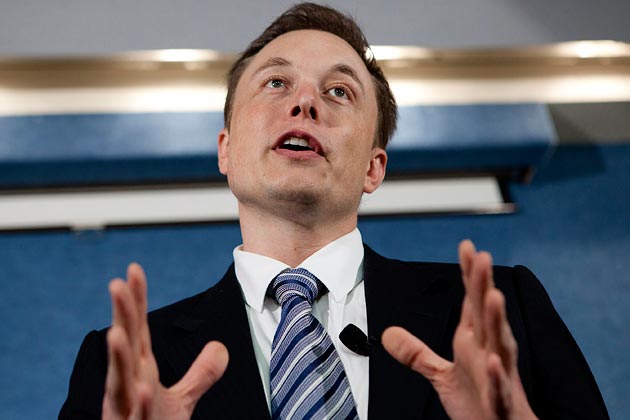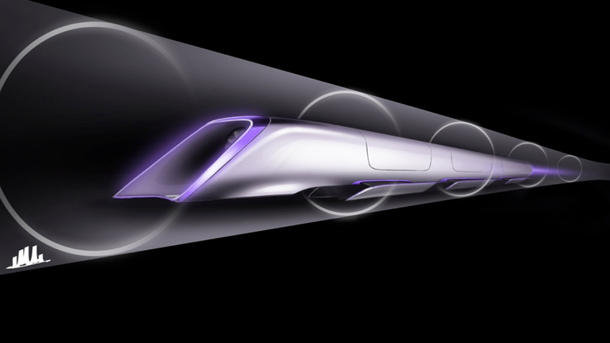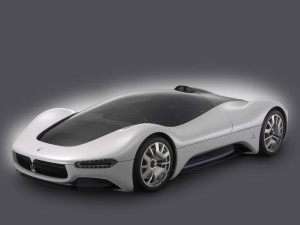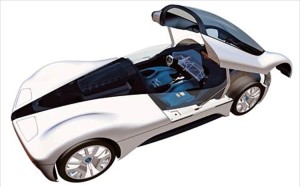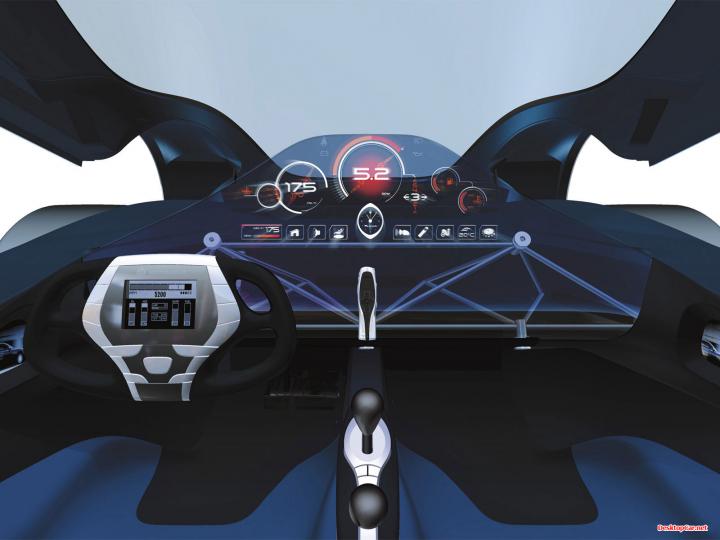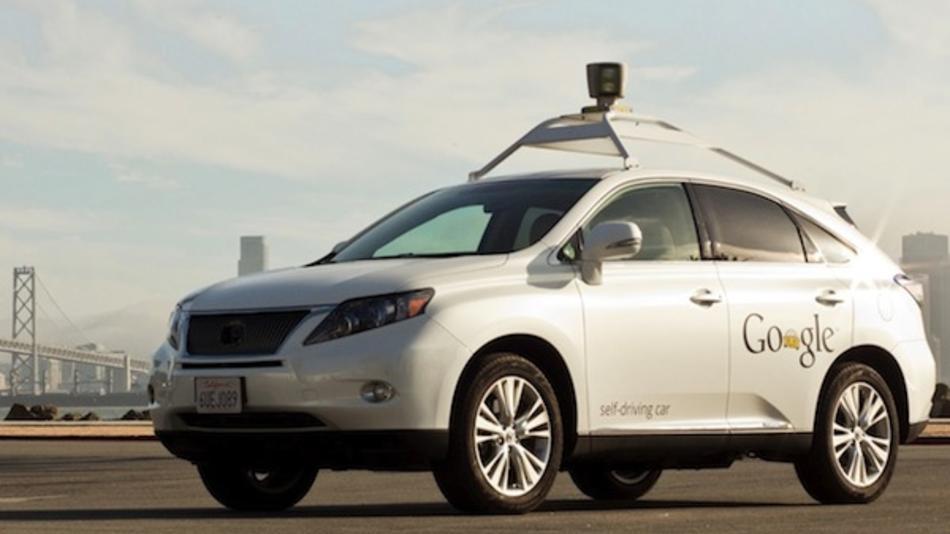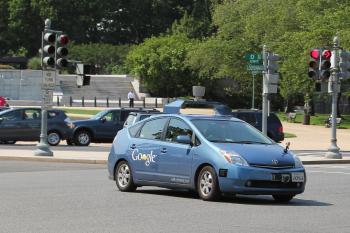-

-

-

-

-

-

-

-

-

-

-
-

-

-

-

-

-

-

-

-

-

-

-

-

-

-

-

-

-

-

-

-

-

-

-

-

-

-

-

-

-

-
-

-

-
 TOTW: Google's Project Ara Modular Phone May Be The Future Of SmartphonesOctober 30, 2014
TOTW: Google's Project Ara Modular Phone May Be The Future Of SmartphonesOctober 30, 2014 -

-

-

-

-

-

-

-

-

-

-

-

-

-

-
-
-

-

-

-

-

-

-

-

-

Posts tagged transportation
The Almost Impossible Ethical Dilemma Behind Autonomous Cars
09 years
You’re driving down the road in your Toyota Camry one morning on your way to work. You’ve been driving for 15 years now and pride yourself on the fact that you’ve never had a single accident. And you have to drive a lot, too; every morning you commute an hour up to San Francisco to your office. You pull into a two-lane street lined on both sides with suburban housing, and suddenly realize you took a wrong turn. You quickly look down at your smartphone, which is running Google Maps, to find a new route to the highway. When you look back up, you’re surprised to see a group of 5 people, 3 adults and 2 kids, have unknowingly walked into your path. By the time you or the group notice each other it’s too late to hit the break or for the pedestrians to run out of the way. Your only option to save the 5 people from being injured, or even killed, by your car is to swerve out of the way… right into the path of a woman walking her child in a stroller. You notice all of this in the half a second it takes you to close the distance between you and the group to only 3-4 yards.
You now have but milliseconds to decide what path to take. What do you do? But more to the point of this article, what would an autonomous car do?
That narrative is a variant of the classic situation known as the Trolley Problem. The Trolley Problem has many variations, some more famous than others, but all of them follow the same general storyline: you must choose between accidentally killing 5 people (e.g., hitting them with your car) or purposefully making an action (e.g., swerving out of the way) that kills one person. This type of situation is obviously one that no one wants to find themselves in, and is so unlikely that most people avoid it their entire life. But in the slim cases where this situation occurs, the split-second decision a human makes will vary from person to person and from situation to situation.
But no matter the outcome of the tragic event, if it does end up happening, the end result will be generally be the fault of a distracted driver. What will happen, though, when this decision is completely in the hands of an algorithm, as it will be when autonomous cars ubiquitously roam the streets years from now. Every new day autonomous cars become more and more something of the present rather than the future, and that leaves many worried. Driving has been ingrained in us for century, and for many, giving that control up to a computer will be frightening. This is despite the fact that in the years that autonomous cars have been on the roads, their safety record has been excellent, with only 14 accidents and no serious injuries. While 14 may seem like a lot, keep in mind that each and every incident was actually the result of human error by another car, many of which were the result of distracted driving.
I’d say that people are more worried about situations like the Trolley Problem, rather than the safety of the car itself, when driving in an autonomous car. Autonomous cars are just motorized vehicles driven by algorithms, or intricate math equations that can be written to make decisions. When an algorithm written to make a car change lanes and parallel park has to make almost ethically impossible decisions, choosing between just letting 5 people die or purposely killing 1 person, we can’t really predict what it would do. That’s why autonomous car makers can’t just let this problem go, and have to delve into the realm of philosophy and make an ethics setting in their algorithms.
This won’t be an easy task, and will require everyone, from the car makers to the customers, thinking about what split-second decision they would make, so they can then program the cars to do the same. This ethics setting would have to work in all situations; for instance, what would it do if instead of 5 people versus one person, it was a small child versus hitting an oncoming car? One suggested solution would be to have adjustable ethics setting, where the customer gets to choose whether they would put their own life over a child’s, or to kill one person over letting 5 people die, etc. This would redirect the blame back to the consumer, giving him or her control over such ethical choices. Still, that kind of a decision, which very well could determine fate of you and some random strangers, is one that nobody wants to make. I certainly couldn’t get out of bed and drive to work knowing that a decision I made could kill someone, and I’d bet I’m not alone on that one. In fact, people may even avoid purchasing an autonomous car with an adjustable ethics setting just because they don’t want to make that decision or live with the consequences.
So what do we do? Nobody seems to want to make kind of decisions, even though it is absolutely necessary. Jean-Francois Bonnefon, at the Toulouse School of Economics in France, and his colleagues conducted a study that may help us all with coming up with an acceptable ethics setting. Bonnefon’s logic was that people will be most happy with driving a car that has an ethics setting close to what they believed is a good setting, so he tried to gauge public opinion. By asking several hundred workers at Amazon’s Mechanical Turks artificial intelligence lab a series of questions regarding the Trolley Problem and autonomous cars, he came up with a general public opinion of the dilemma: minimize losses. In all circumstances, choose the option in which the least amount of people are injured or killed; a sort of utilitarian autonomous car, as Bunnefon describes it. But, with continued questioning, Bunnefon came to this conclusion:
“[Participants] were not as confident that autonomous vehicles would be programmed that way in reality—and for a good reason: they actually wished others to cruise in utilitarian autonomous vehicles, more than they wanted to buy utilitarian autonomous vehicles themselves.”
Essentially, people would like other people to drive these utilitarian cars, but less enthusiastic about driving one themselves. Logically, this is a sensible conclusion. We all know that we should make the right decision and sacrifice your life over that of someone younger, like a child, or a group of 3 or 4 people, but when it comes down to it only the bravest among us are willing to do so. While these scenarios are far and few between, the decisions made by the algorithm in that sliver or a second could be the difference between the death of an unlucky passenger or an even more unlucky passerby. This “ethics setting” dilemma is a problem that can’t just be delegated to the engineers at Tesla or Google or BMW; it has to be one that we all think about, and make a collective decision for that will hopefully make the future of transportation a little more morally bearable.
TOTW: Elon Musk’s Super-Train Hyperloop
0Last year, the state of California gave 7.7 billion dollars to a project trying to build a high speed rail-train, California High Speed Rail (quite self-explanatory). But, this money was just enough to build a small section of the train, and in general, wasn’t that promising to the tech tycoons living, working and scheming in Silicon Valley. Elon Musk, the living comparison to Iron Man (though not as super-hero like), had an idea based off of the old 80s concept, the Hyperloop supertrain. The CHSR was just too expensive and slow, estimated to be around 220 mph. The Hyperloop will probably (hopefully) be 750 mph. Beat that, Californian government.
While being able to go from San Francisco to LA in half an hour, we can’t help wondering, “How?” Well, as I said before, Musk took his idea off of the old vac-train concept. The train itself is in a tube, and because of California’s earthquake tendency, on pillars. On top of the tube are solar panels to help fuel the train. If it’s that fast, it might as well be green, to.
The train, while in action, will ride on top of a floor of pressurized air, letting it, and helping it, gain and gain speed to 800 mph without those pesky sonic booms. To passengers, it will feel like a plane ride. But, after a recent announcement from Musk, we know that it just might be better. First of all, it will be cheaper for passengers. Musk said that the tickets will be cheaper and, not counting the machinery, the pods and tubes will be 6$ billion to build.
Secondly, Musk says that there will be a car option in some of the bigger tubes. You just drive into the train, take off, and be there in 30 min with your car, which can be very useful in cities like LA. Also, you save money, and hassle, from taxis. Overall, the Hyperloop train is so high-tech, cheap, green and revolutionary that I hope it carries through. It has the potential to take over from regular train everywhere. Then again, as Elon said, “Over 1,000 miles, the tube cost starts to become prohibitive, and you don’t want tubes every which way. You don’t want to live in Tube Land.”
TechSpot: SkyTran Hovering Public Transportation
0Public transit is always an issue when discussing a highly populated city. Whether it is buses or taxis, trains or subways, they all pollute a fair amount. Some cities have started to change, such as the popular bicycle system in Paris and other European capitals, but many other cities haven’t bothered. SkyTran, a NASA funded project, is a public transportation system trying to help the pollution, not only in China, but all over the world. Not only could it help the environment, but it is also very fast, lightweight, efficient, cheap and cool-looking.

The pollution is so bad in Beijing, many put their hands out in front of them because they’re worried they’ll hit something… or they’re doing Tai-Chi.
SkyTran uses magnets to hover in the air, reducing friction, making the pod go really fast. The aerodynamic shape and size help it fly through the air. It might be a little fast for some people (almost as fast as a roller coaster), but the passengers can adjust the speed. Still, speed is important, because if you have been on a bus or train, all those stops really slow you down. On a SkyTran, since you and two other people are the only ones in the pod, you can choose the stops. That makes for a fast, energy efficient commute.
If SkyTran does become a reality, the plan is that the pods will all come out from stations, much like chairlifts at amusement parks. The pods would be magnetically floating near a metal rod, supported by relatively thin metal poles. That way, cars can still drive under it, unlike trains. More space, more convenient. Sounds good, right?
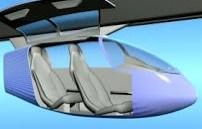
Designed by NASA Ames laboratory in Silicon Valley, California, with the help some start-ups, the SkyTran is a great help to everyone. Whether you are always late, or are worried about the environment, SkyTran is a fascinating transportation idea. Using its solar power, it barely uses any real fuel. Plus, because it is so lightweight, it is really cheap, even cheaper than a bus system. Just imagine, zooming across the city at up to 100mph, going just to where you want to go, no stops. You’ll never have to worry about being late again!
TechSpot: Google Car On California Freeway
0Self driving cars are the future of automobiles and Google Car is the first prototype to actually be allowed to test drive in a few states, including California. And guess what? I spotted one ON THE FREEWAY and the Google Car pulled up right next to us, so I snapped the picture below:
When you look at it closely, it’s just a Lexus with a special camera system strapped to its roof. But when you see the person has no hands on the wheel, it really blows you away. It just seems unnatural. Unfortunately, for half the time I saw it the car was most likely being driven, because it was seemed to be speeding. Still, it show how close we all are to “driving” a self driven car.
TechSpot: Jamstik Mini Guitar, The Future Of Mobile Playing
0For a very long time, pianists have been layering sounds and synths to get the perfect sound. Guitarists, to get the same mix, have to have a complicated set of wires. Jamstik helps that, while also making mobile playing easy, comfortable and seamless.
Jamstik, a Ukelele sized guitar, is made out of only 5 frets, a part to strum and a control button on the side. Jamstik, made for iOS, wirelessly connects and records your music on to your iPad using apps like GarageBand, Animoog and other music apps. Take GarageBand for instance. If you have ever played around with the iOS version of GarageBand, you know that you can virtually pluck strings and play the keys of different instruments, such as the piano, bass, guitar, and other forms of those 3(ie. upright bass, acoustic guitar, hard rock guitar, ect.). But if you have tried to make a good, complex song using the virtual instruments, you know it is extremely hard. Jamstik allows you to play comfortably on real strings and frets, while also taking advantage of the other sounds. Yep, you read it correctly. Say you’re playing the Jamstik, and you are not happy with the regular electric guitar sound; you want a electric piano with a little synth in the background. With Jamstik, you can get that.
To get the piano-synth, you would use two apps: GarageBand and Animoog. Animoog is basically a music-making app that uses colored lights to show you visually what the notes are, and to change the notes you use dials. But instead of this approach, you can use your Jamstik to directly play the synth sounds. But, remember, you don’t want synth sounds. To mix the sounds, all you have to do is easily set up both apps and play and Voila!, you get your sound.
At the Engadget Expand conference, I got to hear a example of what a mashed sound would sound like to the tune of Here Comes The Sun. It sounded great. It makes me almost want to learn the guitar, just to play around with the Jamstik. It just so happens that Zivix(the company that makes Jamstik) thought of that. So, they made a great learning app to go along with Jamstik called Jamtutor. Jamtutor makes it fun to learn guitar by adding in Guitar Hero like games in with the drills. Jamtutor is not the only app they are making, so the Jamstik experience will be complete.
http://www.youtube.com/watch?feature=player_embedded&v=jkd-IywG-60
Jamstik is a perfect way to compose music on the move. The WiFi just makes it easier. With Jamstik, you can make hi-quality music on road trips, on the plane, even on the bus. Unfortunately, Jamstik will be on the market by the 3rd or 4th quarter, so we will have to wait. It’s also not overpriced like some new products are at $250 – $300. So if you are always trying to squeeze your guitar into your car, or you are just beginning, Jamstik could be for you.
TOTW: Maserati Birdcage 75th
0This weeks TOTW highlights an advance in the slickness and speed of automobiles and HUDs(Heads-Up Displays) in vehicles other than jets.
Maserati’s Birdcage 75th was unveiled as a concept car at the 2005 Geneva Auto Show. Just like the Silver Lightning concept car from Mercedes Benz, it was named after an old line of Maserati cars also called Birdcages. They added the 75th because it was the 75th anniversary of Pininfarina, the team who designed it.
Other than being really thin, the Birdcage 75th doesn’t look that much different than nowadays race cars. But look at it carefully. Anything missing? Yep, IT HAS NO DOORS. To get in and out of the car, the front and back of the roof can open up, as pictured below.
Also, the Birdcage has a high-tech HUD system, mounted where a dashboard would otherwise be. Unfamiliar with HUDs? In movies, when the jet fighter pilot has a screen display that tracks the other planes and helps him target them – well that’s a HUD.
Fortunately, the HUD in the car will not shoot at enemies, but will more or less be just like a regular dashboard with a clock, tachometer and speedometer. Besides the HUD, the interior appears similar to today’s sports cars. The steering wheel does also have a screen, to show gas levels, mileage and mph.
Sadly, this car is just a concept, and not even a concept ultimately destined for the market. Maserati simply designed it as a birthday present to themselves for the original team’s 75th anniversary. Still, it shows that integrating things mostly found other places would be a good idea for making the next high-tech supercar.
TOTW: Steve Jobs’ Dream Car
1This week’s Tech Of The Week is an advance in automobile technology and the interplay between smartphones and large-scale consumer products.
Before his death, Steve Jobs had a idea to make Apple an even bigger part of society than it already is. One concept has been called the iCar.

After Jobs died, the idea for an iCar faded, but under new Apple CEO, Tim Cook, there are rumors that the company has started to rethink the idea. An Apple iCar would seamlessly interwork all of Apple’s devices. We could of course expect a typically stylish and futuristic design from Apple as well.
The interior of the car would be a key challenge for the designers. They want it to interwork multiple devices, yet be still a car, not a mobile Apple store. Also, when people shop for cars, they want comfortable seats and attractive dashboards. Apple’s design, like Ford or Tesla, could resonate with the buying public or Apple’s design success for small gadgets might not transfer to large scale products.
“Look at the car industry; it’s a tragedy in America. Who’s designing the cars?” said Mickey Drexler, a long time Apple board member. “Steve Jobs’ dream before he died was to build an iCar.” It will be interesting to see how Apple would do on the car, being a mostly smartphone and computer manufacture. Even without Jobs, Apple will most likely impress the public with a futuristic iCar, just like Steve Jobs wanted.
TechThought: Silver Lightning Concept Car
3712 years
by FFtech
in Recent Posts
Back in 1932, Mercedes Benz released their motor and Formula One racing car, the Silver Arrow. The Silver Arrow was very successful, and the most popular car for german racers in the 1930s. The trademark white, for Germany, decorating the car, the Silver Arrow won many competitions. It even won the French Grand Prix 1-2-3. This type of car was a source of pride to the company and country, and it was only logical to preserve it’s greatness.
79 years later, at the 2011 LA Design Challenge, Mercedes Benz were showing off their concept car, Silver Lighting. Silver Lightning, as you may have guessed, was inspired by Silver Arrow, reintroducing the pride of Mercedes prowess in the racing sport.
As part of their presentation, they made a short film about the car:
Silver Lightning was not only inspired by Silver Arrow, it was also inspired by classic sci-fi movies, as is a lot of technology today. Think about it. The flip-up communicators from Star Trek. In the Silver Lighning’s case, the futuristic lights on the wheels were inspired by Tron: Legacy, and the shape was inspired by Star Wars: Episode II. Along with science fiction, the Silver Lightning embodies everything we want the future to be like: flashy, slick, technologically advanced, and as cool as heck.
Silver Lightning is still not coming out any time soon. It uses a lot of future technologies, like Mag-Tech. Mag-Tech is a retractable roof system, a lot like nowadays convertible roofs. But instead of having to take the whole roof off, this technology would make it easier. Mag-Tech uses small lightweight magnetic squares to quicken the process, and can be quickly put together to make a roof, or easily contracted to make a convertible.
When you look at Silver Lightning, you may be wondering, “Where are the wheels? All I see are rings where the wheels should be!” Totally understandable. Those rings ARE actually the wheels, which is another future technology that might postpone the release of Silver Lightning. The technology is called Omni-Directional Wheels. Inside the rings, there are rollers that are all placed in a different direction, making the car able to move in all directions. This technology would let the driver be able to move the car in all different directions, not just forward and back, and is already being used in the storage and manufacturing business for lifting boxes and heavy objects. Omni-directional wheels would eliminate the need for parallel parking, which in sure many new drivers would be happy about, but the technology isn’t yet ready for implementation into racing or even regular automobiles.
Silver Lightning is designed for speed. The sleek design is perfect for zooming down the freeway or track. But just like Lamborghinis and Maseratis, it will probably become a fancy sports car that like to show off. The problem with many of these technologies, such as the segway, and even Google Glass, is that the hype surrounding them blocks out the unfortunate downsides of the technology itself. It may look cool now, but by the time we get to a point where any of these technologies would be possible, which wouldn’t be that far into the future, there will most likely already be many cars with the same design. Who knows, there may be a time when having a Maserati Silver Lighting would be just as normal as having a Toyota, but for now, it is still a futuristic concept, yet to be built.
TechSpot: Google Driverless Car
1A driverless car. It seems way in the future, but once again, Google thought of it. They call it Google Car.
Google Car uses LIDAR, a 64-beam laser system to sense when other cars, side walks or bikers are near them. It also uses Google Street View as a basic outline for where buildings and stoplights are.
There have been some arguments about whether this autonomous car is safe or not. Google engineers fight back and say that robots have faster reactions, never get sleepy and have a 360 view, so you never have the dreaded ‘in the blind spot accident’. So far, only 3 states, California, Florida and Nevada, have permitted Google to test Google Car their state.
Google are also taking lots of precautions. In the states they are allowed in, they have given the car lots of tests. They’ve had they car navigate through traffic, drive in the bumpy desert-plains of Nevada and it’s even made its way down the infamous Lombard Street, on which lots of human drivers have trouble.
Google have taken the first step(as usual) in the autonomous cars industry, but soon, when we go out side, we will see lots of updated autonomous cars navigating the streets, taking people wherever they want to go.



